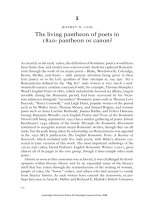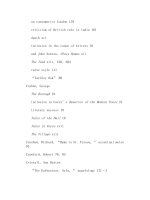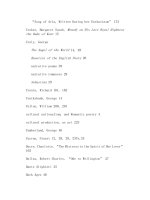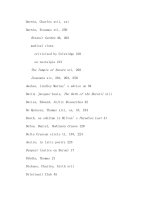The cambridge companion to british roman 32
Bạn đang xem bản rút gọn của tài liệu. Xem và tải ngay bản đầy đủ của tài liệu tại đây (45.93 KB, 1 trang )
1
JEFFREY N. COX
The living pantheon of poets in
1820: pantheon or canon?
As recently as the early 1980s, the definition of Romantic poetry would have
been fairly clear and mostly non-controversial. Students explored Romanticism through the work of six major poets – Blake, Wordsworth, Coleridge,
Byron, Shelley, and Keats – with primary attention being given to their
lyric poetry or to the lyric qualities of their attempts at, say, epic. Yet a
Romanticism defined by the “Big Six” male writers is very much a midtwentieth-century creation contrasted with, for example, Thomas Humphry
Ward’s English Poets of 1880, which included the favored six (Blake, largely
invisible during the Romantic period, had been recovered by his Victorian admirers) alongside “secondary” Romantic poets such as Thomas Love
Peacock, “Barry Cornwall,” and Leigh Hunt, popular writers of the period
such as Sir Walter Scott, Thomas Moore, and Samuel Rogers, and women
poets such as Anna Laetitia Barbauld, Joanna Baillie, and Felicia Hemans;
George Benjamin Woods’s 1916 English Poetry and Prose of the Romantic
Period (still being reprinted in 1950) has a similar gathering of poets. Ernest
Bernbaum’s 1949 edition of his Guide Through the Romantic Movement
continued to recognize sixteen major Romantic writers, though they are all
male; but the path being taken by scholarship on Romanticism was signaled
in the 1950 MLA publication The English Romantic Poets: A Review of
Research, which included only five male poets, with Blake’s absence corrected in later versions of this work. The most important anthology of the
1970s and 1980s, David Perkins’s English Romantic Writers (1967), gives
almost all of its pages to the core group, though it does sample other male
poets.
Almost as soon as this consensus was achieved, it was challenged by developments within literary theory and by an expanded sense of the literary
itself that has arisen through the reintroduction of the writing of women,
people of color, the “lower” orders, and others who had seemed to vanish
from literary history. As such writers have entered the classroom, as perhaps best seen in Anne K. Mellor and Richard E. Matlak’s British Literature
10
Cambridge Collections Online © Cambridge University Press, 2008









